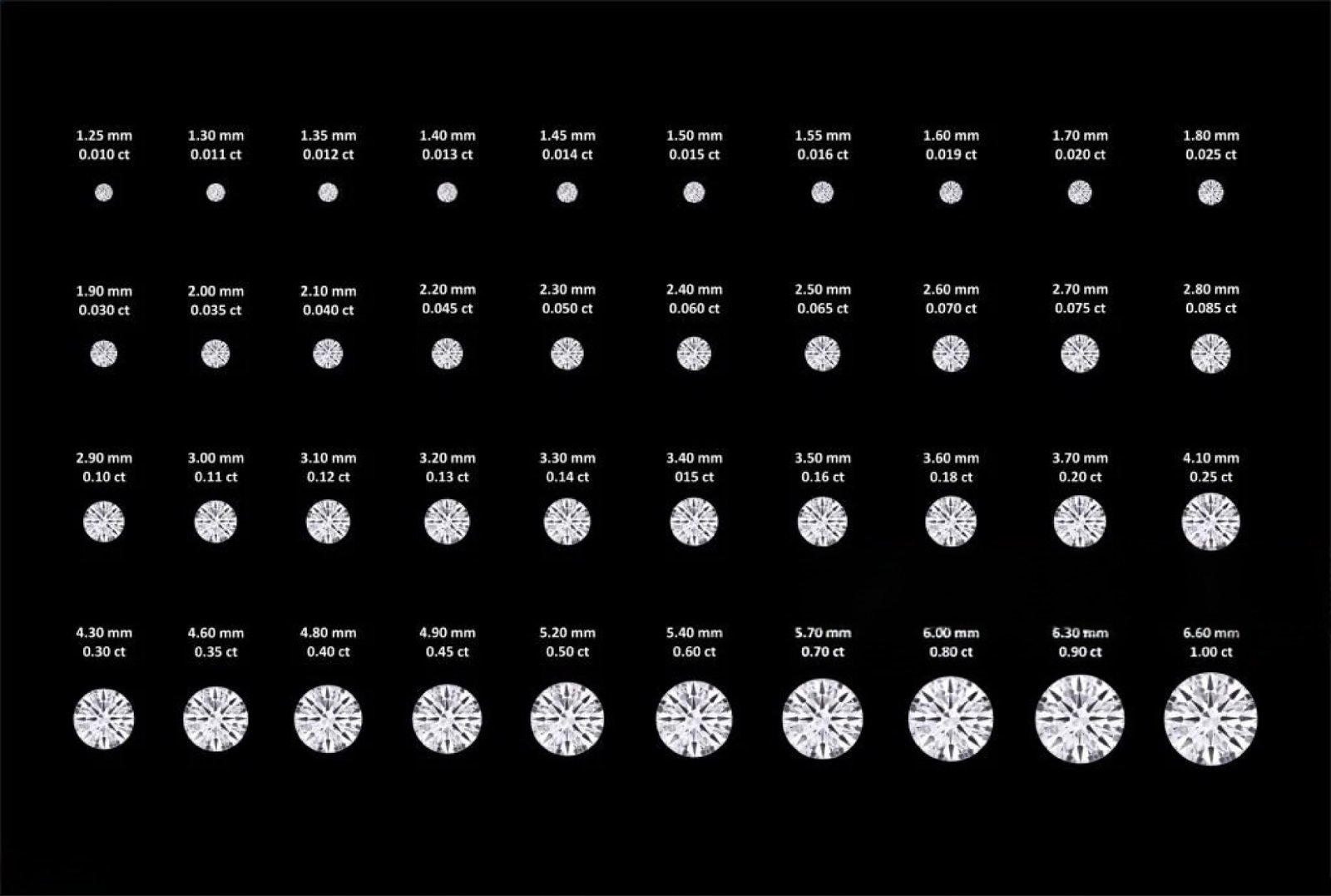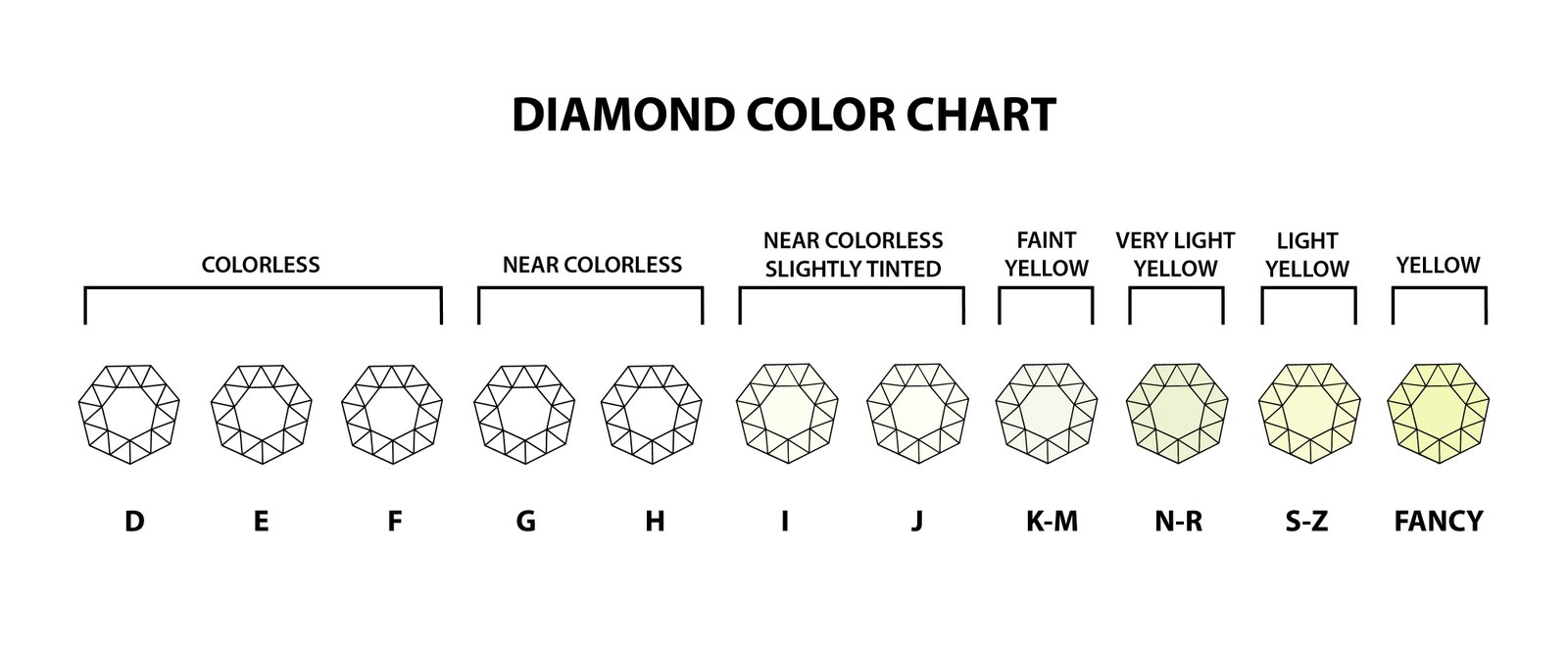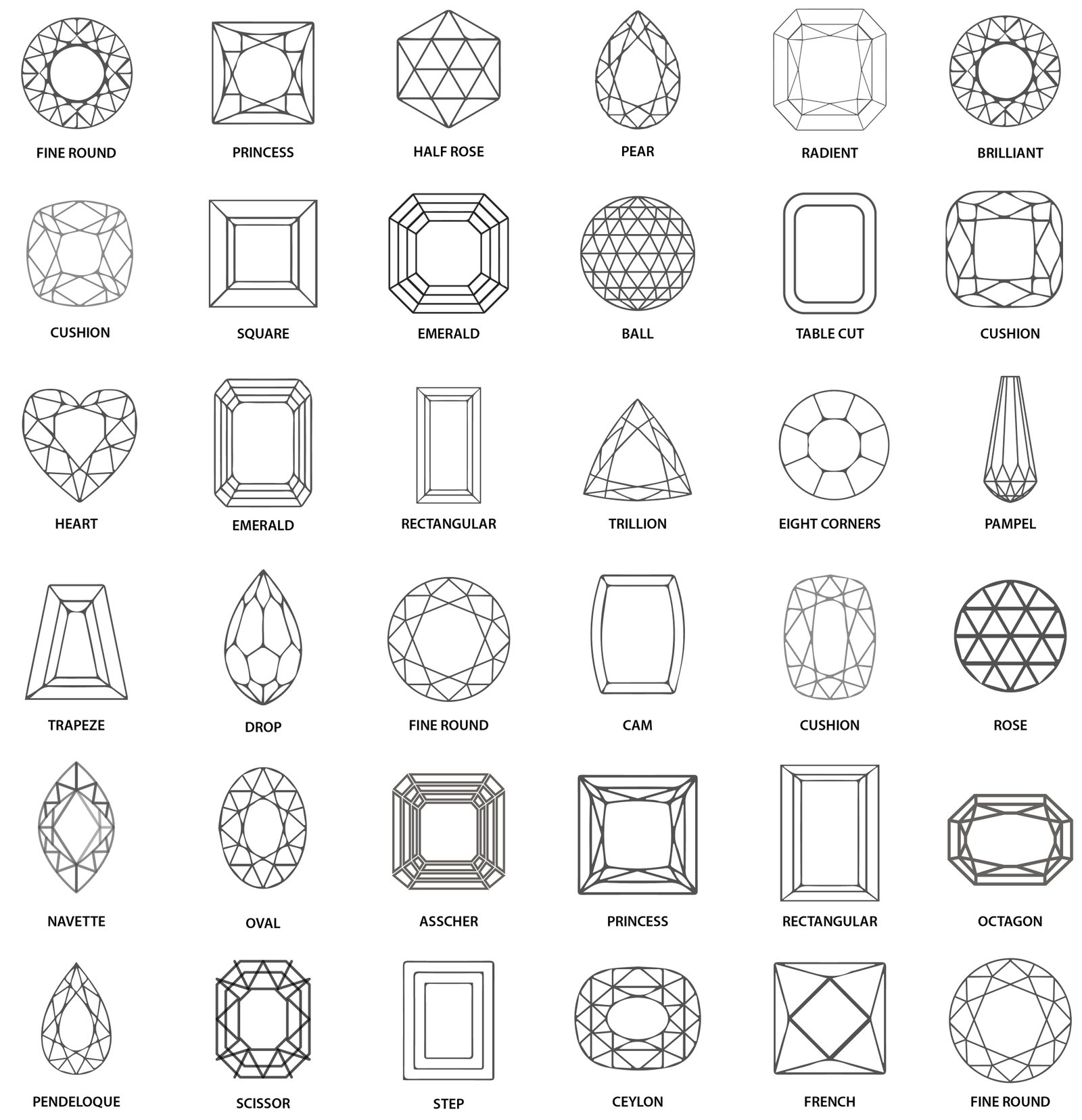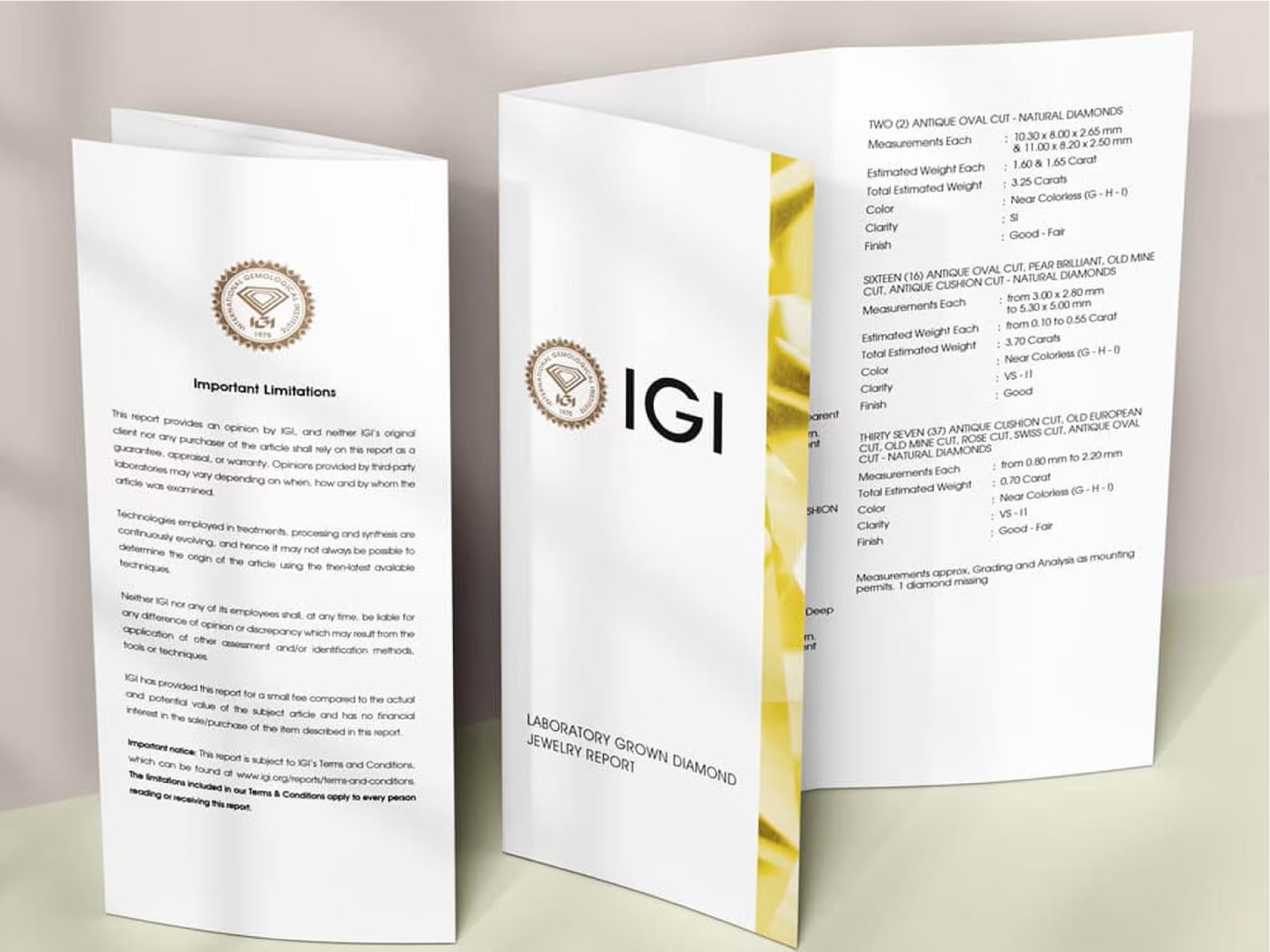Diamonds have captivated hearts for centuries with their unparalleled beauty and symbolism. Whether you’re shopping for an engagement ring, a special gift, or a personal treasure, selecting the right diamond is a momentous decision. At Ellight Jewels, we believe that an informed choice leads to a lifetime of satisfaction. That’s why we’ve created this comprehensive guide to diamond education, designed to empower you with the knowledge you need to find your perfect diamond.
In this guide, we’ll explore the essential aspects of diamonds, including the famous 4Cs—Carat, Cut, Color, Identification and Clarity. We’ll also delve into diamond shapes, certifications, budget considerations, and ethical sourcing. With clear explanations and helpful visuals, you’ll gain the confidence to make a choice that reflects your unique style and values.
Understanding the 4Cs is crucial to evaluating a diamond’s quality and value. Let’s break down each component:
Carat refers to the weight of a diamond, with one carat equal to 200 milligrams. While carat weight influences a diamond’s size, it’s important to note that two diamonds of the same carat weight can appear different in size depending on their cut and shape.

For example, a well-cut diamond may appear larger than a poorly cut one of the same weight. When considering carat weight, think about your personal preference and how the diamond will look on the intended wearer. Carat weight should be balanced with the other Cs for the best overall value.
The cut of a diamond is perhaps the most important factor in determining its beauty. It refers to how well the diamond’s facets interact with light, creating brilliance, fire, and scintillation. Watch video of Cut grades comparison with diagrams illustrating light reflection in Excellent vs. Poor cuts
Diamonds are graded on a scale from Excellent to Poor. An Excellent cut maximizes the diamond’s ability to reflect light, resulting in a dazzling display. In contrast, a Poor cut can make even a high-quality diamond appear dull. When choosing a diamond, prioritize cut to ensure you get the most sparkle for your investment.
Let us be a part of your story and celebrate your moments with sparkle and grace!
Diamonds come in a range of colors, from colorless to light yellow or brown. The Gemological Institute of America (GIA) grades diamond color on a scale from D (colorless) to Z (light color).
Colorless diamonds (D-F) are highly prized for their purity, while near-colorless diamonds (G-J) offer excellent value with minimal color detectable to the untrained eye. Diamonds with more noticeable color (K-Z) may suit certain settings or preferences. Consider the metal color of your setting, as it can influence how the diamond’s color appears—yellow gold can complement warmer hues, for instance.
Clarity measures the presence of internal inclusions and external blemishes in a diamond. These natural characteristics, formed during the diamond’s creation, make each stone unique.

Clarity grades with magnified views highlighting different inclusion types and grades
The GIA clarity scale ranges from Flawless (no inclusions or blemishes visible under 10x magnification) to Included (inclusions visible to the naked eye). Most diamonds have some inclusions, but those graded VS2 (Very Slightly Included) or higher typically appear clean to the naked eye. Consider clarity alongside the other Cs and your tolerance for imperfections.
Beyond the 4Cs, the shape of a diamond is a matter of personal taste. Each shape has its own character and appeal.

Collage of popular diamond shapes with labels]
• Round Brilliant:The most popular shape, known for its exceptional sparkle.
• Emerald Cut: Rectangular with step-cut facets, offering vintage elegance.
• Oval: An elongated shape that can make fingers appear slender.
• Cushion Cut: A soft, pillow-like shape with romantic charm.
• Pear Shape: A teardrop design combining round and marquise cuts.
• Heart Shape: A symbol of love, perfect for romantic gestures.
Choose a shape that resonates with your style or the personality of the recipient.
A diamond certification, or grading report, is an unbiased assessment of a diamond’s quality by a reputable gemological laboratory. It provides detailed information about the 4Cs and other characteristics.

Reputable certifying bodies include the Gemological Institute of America (GIA), the American Gem Society (AGS), and the International Gemological Institute (IGI). When purchasing a diamond, insist on a certification from one of these organizations to ensure authenticity. Certifications not only verify quality but also provide peace of mind, confirming your investment is genuine.
Selecting a diamond within your budget requires balancing the 4Cs. Here are some practical tips:
• Prioritize Cut: A well-cut diamond appears more brilliant, even if smaller or with slight color/clarity imperfections.
• Consider Near-Colorless Grades: G-H range diamonds offer great value, appearing colorless to most but costing less than D-F grades.
• Prioritize Cut: A well-cut diamond appears more brilliant, even if smaller or with slight color/clarity imperfections.
• Choose Clarity Wisely: Opt for eye-clean diamonds (e.g., VS2 or SI1), where inclusions aren’t visible without magnification.
• Shape Matters: Round brilliants often cost more; alternative shapes can offer uniqueness at a lower price.
• Carat Weight: Choose weights just below popular sizes (e.g., 0.90 instead of 1.00 carat) to save money without noticeable size loss..
The perfect diamond fits your budget and brings you joy.
Ethical sourcing is increasingly vital. At Ellight Jewels, we’re committed to offering conflict-free diamonds sourced responsibly.
Look for diamonds certified by the Kimberley Process, which prevents conflict diamonds from entering the market. Additionally, consider stones from mines adhering to strict labor and environmental standards. Choosing ethically sourced diamonds ensures your jewelry aligns with your values.
Selecting a diamond is a personal and exciting journey. Armed with knowledge of the 4Cs, shapes, certifications, and ethical considerations, you’re well-equipped to make an informed decision. There’s no one-size-fits-all approach—the perfect diamond speaks to you, fits your budget, and brings joy for years.
If you have questions or need assistance, our expert team at Ellight Jewels is here to help. Explore our collections or contact us to begin your diamond journey today.